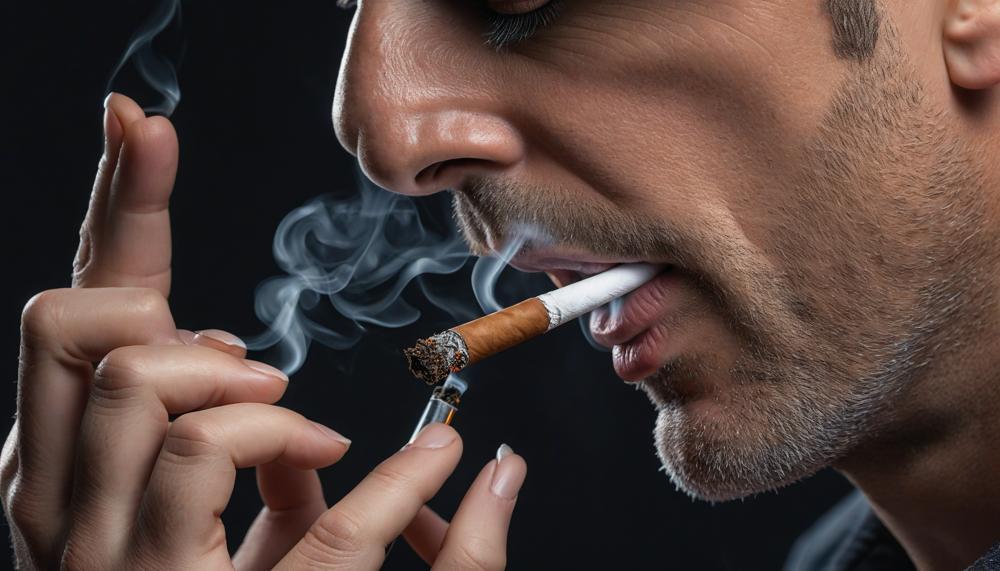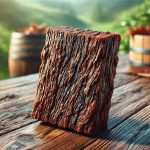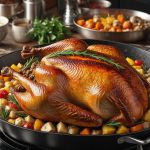Can you use a smoker outside in the rain? The short answer is yes. But why stop there when we can delve into the nuances of mastering this art, rain or shine?
Whether you’re a seasoned pitmaster or just getting started, smoking meat is as much about embracing the elements as it is about perfecting your technique. Picture this: a gentle drizzle, the aroma of hickory or mesquite wafting through the air, and your smoker quietly doing its job. But before you embark on this flavorful journey, it’s crucial to understand the ins and outs of smoking in wet weather.
In this guide, we’ll uncover the secrets to safely and effectively using your smoker in the rain. From essential precautions to maintaining that ideal temperature and smoke balance, we’ll cover everything you need to know to ensure your culinary creations are a success, rain or shine. So, let’s fire up the grill and explore how to make the most of your smoker, even when the clouds are threatening overhead.
Contents
- 1 Can You Use a Smoker Outside in the Rain?
- 2 Risks of Using a Smoker in Wet Conditions
- 3 How to Prepare Your Smoker
- 4 Preparing Your Food for Smoking
- 5 Choosing the Right Fuel and Wood
- 6 Maintaining Optimal Temperature and Smoke Levels
- 7 Cooking Tips and Tricks
- 8 Cleaning and Storing Your Smoker
- 9 Conclusion
Can You Use a Smoker Outside in the Rain?
| Potential Risks | Precautions | Additional Tips |
| Electrical Shock | Ensure the smoker is plugged into a GFCI outlet or use a weatherproof extension cord. | Check cords for damage before use. |
| Water Damage | Position the smoker under a covered area to prevent rain exposure. | Use a waterproof cover for extra protection. |
| Temperature Control | Use a smoker with good insulation to maintain internal temperature. | Consider using a windbreak to shield the smoker. |
| Grease Fires | Regularly clean out grease build-up to reduce fire risk. | Keep a fire extinguisher nearby. |
| Smoke Production | Adjust vents to control airflow and prevent excessive smoke. | Use dry wood to avoid excessive steam. |
Risks of Using a Smoker in Wet Conditions
| Risks of Using a Smoker in Wet Conditions | Potential Hazards | Mitigation Strategies |
| Electrical Hazards | Exposure to rain increases the risk of electrical shock. | Use a GFCI outlet or a waterproof extension cord to prevent electrical accidents. Position the smoker under cover to shield it from rain. |
| Water Damage | Moisture can damage the smoker’s electrical components and affect its performance. | Ensure the smoker is covered or use a waterproof cover designed for your specific model. Regularly inspect and maintain seals to prevent water ingress. |
| Temperature Control | Rain can disrupt temperature regulation, leading to uneven cooking or undercooking. | Use insulation blankets or build a windbreak around the smoker to maintain stable internal temperatures. Monitor temperature closely during adverse weather conditions. |
| Smoke Quality | Wet conditions may interfere with smoke production and flavour infusion. | Choose dry wood chips and fuel. Position the smoker away from wind to preserve smoke circulation. Consider using a smoke generator for consistent smoke output. |
| Safety Concerns | Slippery surfaces and reduced visibility can increase the risk of accidents. | Keep the grilling area clean and dry. Use non-slip mats and wear appropriate footwear to prevent slips and falls. |
How to Prepare Your Smoker
To prepare your smoker for effective use in various weather conditions, including rain, follow these essential steps:
Weatherproofing the Smoker:
Insulate and treat the smoker chamber and firebox to maintain optimal temperatures. This helps in keeping cold air out and retaining heat inside, crucial for consistent smoking results even in rainy weather.
Applying Protective Measures:
Implement strategic weatherproofing techniques suitable for your smoker type (e.g., offset, pellet, kettle, bullet, vertical, wood, gas, or electric). This ensures efficiency by preventing heat loss and water ingress.
Managing Thermal Characteristics:
Control the smoker’s thermal dynamics to regulate heat and smoke production accurately. This is vital for achieving desired smoking outcomes regardless of external weather conditions.
Utilizing Cold-Weather Tips:
Employ cost-effective methods to enhance insulation and fire efficiency during colder months. This includes using insulated blankets or jackets, sealing gaps, and choosing appropriate fuel sources.
By following these steps, you can ensure your smoker operates effectively in rainy conditions, maintaining consistent temperatures and optimal smoke levels for flavorful results.
Preparing Your Food for Smoking
| Preparing Your Food for Smoking | ||
|---|---|---|
| Key Steps | Normal Weather | Rainy Weather |
| Seasoning or Marinating | Ensure food is well-seasoned or marinated to enhance flavor absorption. | Same as normal weather, but consider longer marination to counter moisture. |
| Choosing Wood Chips | Select suitable wood chips based on desired flavor profile (e.g., hickory for robust taste). | Use wood that burns well in damp conditions, like oak or cherry. |
| Preheating | Preheat smoker to ideal temperature before placing food. | Allow extra time for preheating due to potential rain-induced temperature drops. |
| Smoker Protection | No special measures needed under normal conditions. | Use a smoker cover or shelter to shield from rain and maintain temperature stability. |
| Cooking Adjustments | Follow standard cooking times and temperatures. | Expect longer cooking times due to potential temperature fluctuations from rain. |
In preparing food for smoking, whether under clear skies or rainy conditions, the process remains rooted in ensuring optimal flavour and texture. Seasoning or marinating your meat is crucial to maximising its taste, whether the sun shines or the rain falls.
Choosing the Right Fuel and Wood
To ensure optimal performance and flavor when smoking outdoors in the rain, it’s crucial to select the right types of fuel and wood. Hardwoods such as oak, maple, and pecan are ideal choices. These woods burn efficiently even when damp, providing consistent heat and imparting rich flavors without overwhelming bitterness.
Avoid softwoods and resinous woods as they tend to produce acrid smoke and unpleasant tastes when wet.
Additionally, using charcoal as fuel can help maintain steady temperatures despite rainy conditions, ensuring your smoker operates smoothly. By choosing seasoned hardwoods and charcoal, you’ll enhance your smoking experience, creating deliciously smoked dishes regardless of the weather.
| Wood Type | Advantages | Considerations |
| Oak | Produces a robust, smoky flavor. | Ensure it’s well-seasoned to burn efficiently. |
| Maple | Imparts a mild, sweet flavor. | Choose dry wood to prevent excessive smoke. |
| Pecan | Offers a nutty, slightly sweet taste. | Check for dryness to maintain consistent heat. |
| Charcoal | Provides steady heat for long smoking sessions. | Use quality charcoal to avoid fluctuations in temperature. |
Maintaining Optimal Temperature and Smoke Levels
Weather conditions, like rain, can significantly impact maintaining optimal temperature and smoke levels when using a smoker outdoors. Here’s how:
Rain can cause fluctuations in the smoker’s temperature due to the cooling effect on metal surfaces, making it challenging to achieve and sustain the desired cooking heat. It can also dampen or extinguish the fire, leading to inconsistent smoke production and poorly cooked food.
Moreover, excessive moisture from rain hinders airflow and ventilation within the smoker, resulting in inadequate smoke circulation and under-smoked food. Safety-wise, wet conditions increase the risk of slips and electrical hazards for electric smokers.
To counter these challenges, consider using weather-resistant covers, positioning smokers under shelter, or constructing temporary roofs. Insulation techniques can help maintain heat despite external cooling. These strategies safeguard against rust and corrosion on the smoker.
In essence, understanding and preparing for these impacts are crucial for successful outdoor smoking, ensuring consistent results regardless of weather conditions.
Cooking Tips and Tricks
Prepare Your Smoker
- Ensure your smoker is positioned under a sturdy shelter or use a waterproof cover to protect it from direct rainfall.
- Check all electrical components and connections to avoid water damage and potential hazards.
Choosing Fuel and Wood
- Opt for dry fuel such as charcoal or propane, which are less affected by moisture.
- Use hardwood chunks or chips that have been pre-soaked to control smoke intensity and maintain consistent temperature.
Maintaining Temperature and Smoke Levels
- Invest in a quality smoker thermometer that is weather-resistant and easy to read.
- Adjust vents or dampers frequently to regulate airflow, preventing temperature fluctuations caused by rain.

Preparing Food for Smoking
- Pat dry meat or vegetables thoroughly before placing them in the smoker to prevent water from affecting smoke absorption.
- Consider using a drip pan or foil underneath food to catch excess moisture and prevent flare-ups.
Safety Precautions
- Avoid standing directly over the smoker when opening the lid to prevent steam burns from escaping heat.
- Use insulated gloves and long utensils to handle hot surfaces and food safely.
Monitoring and Adjusting
- Regularly check the smoker’s temperature and fuel levels, making adjustments as needed to maintain a steady cooking environment.
- Be patient with cooking times, as rain can affect heat retention and overall smoking duration.
Cleaning and Storage
- After use, clean the smoker thoroughly to remove any residue or moisture that could cause rust.
- Store your smoker in a dry, protected area to prolong its lifespan and maintain functionality.
Cleaning and Storing Your Smoker
To ensure your smoker lasts and performs at its best, especially against rain and other weather conditions, follow these expert practices:
- Regular Cleaning: Wipe down the exterior with a mild soapy solution and a soft cloth to maintain its appearance and prevent buildup.
- Thorough Maintenance: Conduct a comprehensive cleaning session before storing. Remove ashes, grease, and debris from grates, interior surfaces, and drip pans.
- Inspect and Repair: Regularly check seals, gaskets, and hinges for wear or damage. Replace any worn-out parts to prevent further deterioration during storage.
- Prevent Rust: Apply a thin layer of cooking oil to interior surfaces before storing to shield against rust during inactive periods.
- Protect from Elements: Invest in a high-quality, weather-resistant cover to shield your smoker from rain, snow, UV rays, and other outdoor elements.
- Ideal Storage: Store your smoker in a cool, dry place such as a shed or garage. If outdoors, ensure it’s covered adequately and shielded from direct exposure.
By following these steps, you’ll maintain your smoker’s longevity and ensure it performs optimally, no matter the weather conditions.
Conclusion
In mastering the art of using a smoker outdoors in the rain, one thing is clear: with preparation and caution, you can indeed achieve delicious smoked meats despite the weather’s challenges. Embracing the elements adds a unique dimension to your culinary journey, where the gentle drizzle enhances the aroma of your chosen wood chips, be it hickory, mesquite, or another favorite.
To ensure a successful smoking session amidst raindrops, it’s crucial to understand and mitigate potential risks. Electrical safety should be paramount; using a GFCI outlet or a weatherproof extension cord prevents hazards. Positioning your smoker under cover or employing a waterproof shield guards against water damage, maintaining your equipment’s integrity and performance.
Temperature control is another critical factor; insulated smokers and windbreaks shield against fluctuating weather conditions, ensuring consistent heat for that perfect smoke. Regular maintenance, including grease cleaning and smoke adjustment, further refines your technique for optimal results.
So, next time rain threatens your barbecue plans, fear not. Armed with these insights, you can confidently wield your smoker, turning a drizzly day into a savory triumph.






